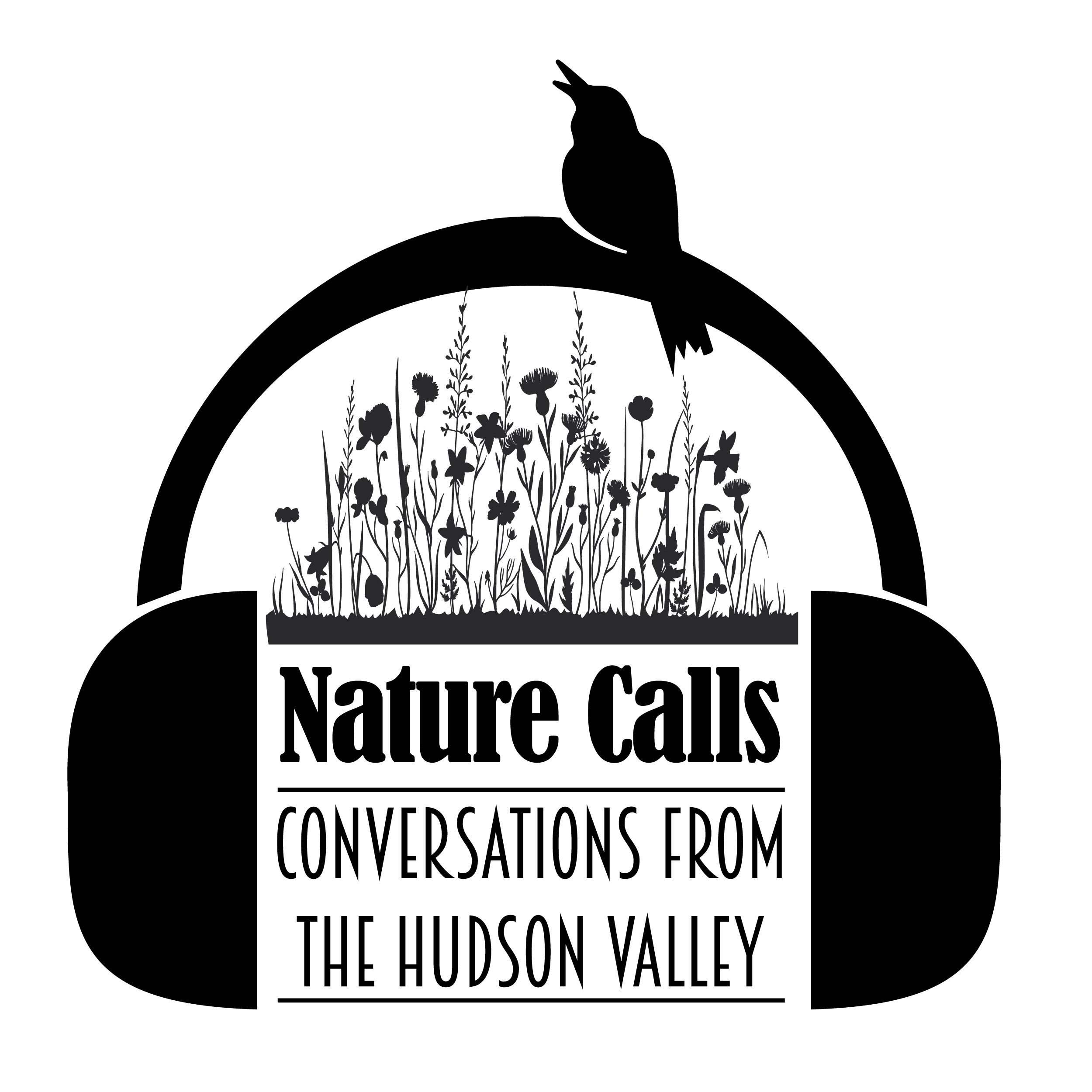Episodes
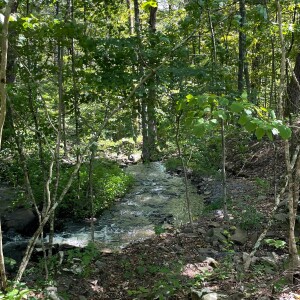
2 hours ago
Episode 182: Master Forest Owner Program
2 hours ago
2 hours ago
Shane Stevens, Natural Resource Program coordinator for Cornell Cooperative Extension of Columbia and Greene Counties, is our featured guest in this episode.. Shane is also Regional Director of the Master Forest Owners Program of the Catskills and the Lower Hudson. The topic is the Master Forest Owner (MFO) program.
Begun in 1991, the program is a collaboration of Cornell Cooperative Extension with the US Department of Agriculture, the New York Forest Owners Association (NYFOA), and others. The purpose is to create and train a network of volunteers to help private forest owners to be better stewards of their own properties. Fourteen million acres of New York State woodlands, approximately 75% of the total state's wooded acreage, are in private hands, Cornell and others want to enable individual landowners to tend their lands responsibly. Education and access to expert and experienced resources are the best means to this goal.
The benefits of knowledgeable management of privately owned woodlands include more reliable clean air and water, maintainable harvests and use of timber resources, and accessible recreational resources. The MFO program is set up to train property owners who are interested in the long term maintenance of their forest resources. Members are valued for their experience, enthusiasm, and willingness to share their expertise. There are no required minimal experience levels, and the “forest ownership” need not be large acreage. A few acres and a passion for the forest is enough, combined with a willingness to share their expertise with the public.
Training has gone hybrid, and is mostly Zoom sessions, with a final in-person field day at the conclusion of training. For most counties in the Hudson Valley, this takes place at the Siuslaw Model Forest, in Acra (Greene County). Students get the chance to meet in person and bond while exploring, among other things, the teaching forest's deer exclosure test area and the shiitake mushroom growing yard. There are no required volunteer hours, but each trainee is encouraged to conduct forest visits as requested by landowners.
The requests for a 'woods walk' are usually submitted online, with a questionnaire providing details about the landowners' interests and goals for their woodlands. Initial forest visits are done with an experienced MFO, but the volunteer can proceed on his or her own once he/she feels confident. The actual visit can cover a range of topics including questions about the overall health of the trees in the forest, management of invasive species, creating habitat for birds and wildlife, deer management, agroforestry, silviculture, and/or options for forest regeneration. On average, a MFO volunteer does 1-3 visits a year. Additional information or referrals are usually sent to the landowner after the visit depending on the landowner's interests. Direct referrals to individuals are not done, but lists of approved practitioners in the appropriate fields can be provided. NYS Department of Environmental Conservation (DEC) has a cooperating foresters list, and mywoodlot.com and Forest Connect have rich websites. Forest Connect even has an excellent YouTube channel.
There is a wide array of resources available to learn how to steward a forest. A Woods Walk with a Master Forest Owner volunteer is a great place to start. Listen in to determine if this makes sense for you to explore further.
Hosts: Tim Kennelty and Jean Thomas
Guest: Shane Stevens, CCE
Photo by: Teresa Golden
Production Support: Linda Aydlett, Deven Connelly, Teresa Golden, Tim Kennelty, Amy Meadow, Xandra Powers, Annie Scibienski, Jean Thomas
Resources

7 days ago
Episode 181: Carbon and Forests
7 days ago
7 days ago
In this episode, Tracey Testo-Smith, Agroforestry and Natural Resources Program Manager at Cornell Cooperative Extension of Columbia and Greene Counties, is our guest. The topic is a timely one, Carbon and Forests. Climate change and its ramifications have made us aware of the importance of halting excessive release of carbon as CO2 into the atmosphere.
One of the main agents of sequestering and storing carbon on the planet is the planet's network of forests and woodlands. Tracey explains the importance of sequestering (gathering) and storage of carbon molecules in the tissue of plants. Trees are made up of fifty percent carbon, and as they grow and mature, they collect more molecules during their lifespan. Even after death, they hold the carbon until the stage at which they begin to decay. Even then, the carbon may be absorbed into the soil and continue to be stored there. Carbon exists in “pools” of standing live trees, the forest floor, and dead and decaying wood and leaf litter. In a healthy forest, the cycle continues for years. Forest owners, who are aware of these facts, strive to maintain healthy systems, and are encouraged to assess their property for value and balance.
There are many carbon “market” programs in place to try to encourage landowners to keep a healthy carbon control in place, some regulatory, like in California, and many voluntary, both private and in cooperation with state and local governments. One in particular is the Family Forest Carbon Program, for owners with thirty or more acres of woodland. In conjunction with the Nature Conservancy, it gives smaller forest owners financial incentive to keep acreage in woodlands, and can provide long term contracts with some payments and access to forestry advice, planning, inventory and data.As owners of woodlots, Tim and Jean had many questions about specifics. Acknowledging that the most efficient carbon sequestration and storage happen in a healthy forest, Tracey addresses nine management strategies available. Among them are deer management, with deer exclosures getting considerable attention. How to recognize success can consist of monitoring the impact of such stresses as insects, diseases, population of invasives, and tracking the inventory of plants and other data. The goals are regeneration, a healthy canopy, and a balance of young and older growth plants. Tracey also has information about scorecards for keeping your forest healthy, and her office as well as many partner agencies can provide help and information.
Hosts: Tim Kennelty and Jean Thomas
Guest: Tracey Testo-Smith
Photo by: Jean Thomas
Production Support: Linda Aydlett, Deven Connelly, Teresa Golden, Tim Kennelty, Amy Meadow, Xandra Powers, Annie Scibienski, Jean Thomas
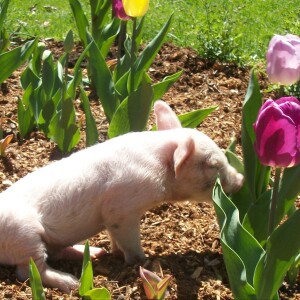
Thursday Jul 03, 2025
Episode 180: Hannacroix Hills Farm
Thursday Jul 03, 2025
Thursday Jul 03, 2025
In this episode, Master Gardener Volunteer Nicole Schmitt joins Tim and Jean to talk about her mini farm where she raises goats, chickens and hogs amidst an active flower farming operation. Small-scale farming is experiencing a resurgence, and Nicole has hands-on experience to share. Nicole describes how she came into Hannacroix Hills Farm, her ten acre farm based from a nineteen thirties farmhouse, by chance. Since assuming the property, she has been able to fulfill her dream of escaping suburbia and knowing exactly where her food comes from. She is also striving to have the farm support itself in an ecologically responsible manner.
Her descriptions of the herd of Nubian goats, dozens of chickens, and a small group of pigs tell about the ultimate uses for each type of animal. The goats are dairy goats, and their product is for personal use, with surplus being fed to the pigs. Some of the kids are sold for livestock as 4-H projects. The pigs are a seasonal endeavor, being bought as piglets in the spring, then allowed to forage in a special fenced area until the fall, when they are sent to be butchered and sold as half and whole shares, custom butchered. All her animals are raised as near organic as possible, although regulations make it too cumbersome to qualify as officially organic with the state. Each type of animal serves as a factor in the cycle of life on the farm. Surplus dairy product from the goats feeds the chickens and pigs. The chicken waste becomes fertile compost, and the pigs roaming their fenced area are rooting up the soil and serve as disruptors to improve the ultimate quality of the soil for other farm uses.
Nicole admits to being fond of her animals, more than she probably should be, but counts her emotional well-being as part of the benefits. Her chicken flock is dear to her heart. There are no favorite breeds, as she finds them all beautiful, each in their own ways. One group of hens is dedicated to egg production and another to meat production, both essential to the financial survival of the farm. In answer to Tim's question about maintaining general healthy conditions among the animals, Nicole explains that twice daily flock inspection for egg gathering keeps an eye on conditions among the birds. Likewise, the goats and pigs are monitored daily at feeding and milking times. To date, this vigilance has headed off any surprise disasters.
As usual, the conversation went astray, with random questions flying. A brief discussion focused on Nicole's current stint as manager of the Coxsackie Farmer's Market. The episode closed with Nicole giving a thoughtful comment on what she would like to see in the near future with her experiment in farming and livestock rearing.
Hosts: Tim Kennelty and Jean Thomas
Guest: Nicole Schmitt
Photo by: Jean Thomas
Production Support: Linda Aydlett, Deven Connelly, Teresa Golden, Tim Kennelty, Amy Meadow, Xandra Powers, Annie Scibienski, Jean Thomas
Resources
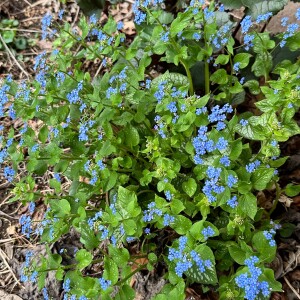
Thursday Jun 26, 2025
Episode 179: Made in the Shade Retrospective
Thursday Jun 26, 2025
Thursday Jun 26, 2025
Master Gardener Volunteer for Cornell Cooperative Extension in Ulster County, Barbara Bravo, joins the Nature Calls: Conversations from the Hudson Valley podcast to provide some guidance and ideas. This collection of four previously aired Made in the Shade short segments has been consolidated into a single episode that focuses entirely on shade gardening.
The first segment discusses the differences between light shade, partial share and deep shade, some of the advantages of shade gardening, and things to consider when selecting appropriate plants for your garden.
Next, learn about Barbara's recommendations for drought-tolerant plants that thrive in dry shade. They are a game-changer for those struggling to cultivate their gardens. Epimedium, brunnera, liriope, hellebores and carex are all options that may work for you.
The third segment focuses on the wide range of options available to add some height to a New York shade garden which usually consist of low-growing plants. But structure and interest can be added with a number of shade tolerant plants such as flowering quince, giant fleece flower and goat’s beard. Ninebark is one of Barbara's favorites. Typically known as a medium shrub native to the eastern and central United States, there are ninebark cultivars that do well in shade. In addition to being a pollinator favorite, most varieties are drought tolerant too.
This episode concludes with a segment on how to add contrast and texture to a summer shade garden. By incorporating plants like Ligularia ‘Britt Marie Crawford’, Hakonechloa macra ‘All Gold’, Athyrium niponicum, Dryopteris Ferns and others, your shade garden doesn’t have to be ‘boring’. Keep it going into the fall with Colchicum autumnale ‘Pleniflorum’ a/k/a Autumn Crocus, or Asarum Europa a/k/a European wild ginger. Listen to the possibilities!
These tips can help you make a shade garden the focal point of your landscape.
Host: Jean Thomas
Guest: Barbara Bravo
Photo by: Teresa Golden
Production Support: Linda Aydlett, Deven Connelly, Teresa Golden, Tim Kennelty, Amy Meadow, Xandra Powers, Annie Scibienski, Jean Thomas
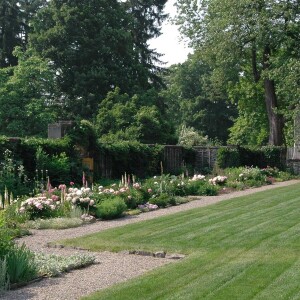
Thursday Jun 19, 2025
Episode 178: Joe Behn is Back
Thursday Jun 19, 2025
Thursday Jun 19, 2025
In this episode, Master Gardener Volunteers Jean and Tim chat with Joe Behn of Behn's Best Perennials in Malden Bridge, NY. Joe has been our guest multiple times before, on episodes 9, 65 and 66. On these prior occasions, we delved into the world of perennials, as Joe is a respected wholesaler of perennials to the landscaping world. This time, we spoke to him during his winter hiatus and he described his life as being “me in my pajamas, accompanied by the dogs".
For a change of perspective, Joe was asked to provide a topic other than growing and/or selecting perennials. He suggested talking about a style of gardening that goes in and out of style... making garden rooms. This is an almost inevitable response to the ever-present challenge of deer. Joe explained that the core idea of garden rooms was making walls and fences around “rooms” where deer could not penetrate. This would make it possible to garden with plants the deer would usually wipe out in one visit. Hardscaping was one focus of a wide-ranging conversation, with ideas flying fast and furious. Joe has strong opinions about the idea that a fence should be beautiful on both sides as well as impermeable to deer and other freeloaders.The conversation then ranged from plant selection, to space demands of a smaller garden, to the value of hardscaping for simplifying maintenance. And, as usual, Jean and Tim had many questions for Joe about their own gardens and plant shopping. Enjoy!
Hosts: Tim Kennelty and Jean Thomas
Guest: Joe Behn
Photo by: National Park Service
Production Support: Linda Aydlett, Deven Connelly, Teresa Golden, Tim Kennelty, Amy Meadow, Xandra Powers, Annie Scibienski, Jean Thomas
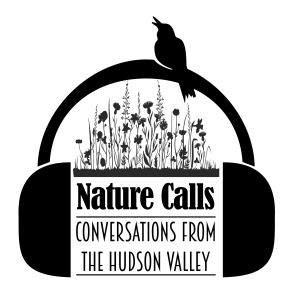
Thursday Jun 12, 2025
Episode 177: Landscape Architecture
Thursday Jun 12, 2025
Thursday Jun 12, 2025
In this episode, Jamie Purinton chats with Tim and Jean about some of the finer points of being a landscape architect. A landscape architect is more than a designer. To be a licensed RLA (registered landscape architect), there is an intense educational requirement followed by a lengthy internship, and culminating a three-day exam! This is because the landscape architect must be expert in engineering aspects of structures, grading, drainage and topology as well as all the design skills and plant expertise found in a landscape designer. In fact, she considers the plants to be “icing on the cake.”
As you might expect, the size of the projects she is involved in can be pretty big. And so can the size of the issues she must address. Public health and environment must be considered, as well as future consequences of climate change. She has worked on many public gardens and waterfront projects, and closer to home, the Mountain Top Arboretum.
The Mountain Top projects spanned several years and included work with partnerships with many of our former guests on the podcast (episode list below). Some of her favorite projects included building a bird-attracting garden and an amphitheater, with a prevailing emphasis on native plants. She states that of the many facets of her job, she has no particular favorite because it is the “pulling it together” that gives her the most satisfaction.
She advises her clients to step away from a rush to manipulate the landscape, and observe what is already there. She says the High Line in New York City is an influence on many people,. There is growing appreciation of habitat among her clients, even to the point where she is planning to shift her work emphasis from larger “public” projects to individuals.
Her two books express her philosophy well. “The Voices of the Land” is a collection of essays, and “Landscape Narratives: Design Practices for Telling Stories,” with M. Poettinger. The latter has become a respected textbook. So if you're curious about how large scale projects can be carried out with minimal intrusion to the environment and ecology, join Tim and Jean and listen in to this episode.
Hosts: Tim Kennelty and Jean Thomas
Guest: Jamie Purinton, RLA
Production Support: Linda Aydlett, Deven Connelly, Teresa Golden,Tim Kennelty, Amy Meadow, Xandra Powers,Jean Thomas
Resources
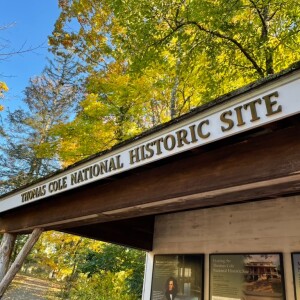
Monday Jun 09, 2025
Episode 176: Thomas Cole Historic Site
Monday Jun 09, 2025
Monday Jun 09, 2025
The Thomas Cole National Historic Site is a National Historic Landmark that includes the former home, also known as Cedar Grove, and the studio of painter Thomas Cole, founder of the Hudson River School of American painting. Located in the village of Catskill, NY, Thomas Cole lived and worked there between 1833 until his death in 1848. In 1965, the property was declared a National Historic Landmark and designated a National Historic Site in 1999. It is also considered an affiliated area of the National Park Service.
Cedar Grove, a Federal Era house, was restored and opened to the public in 2001. Aided by historical photographs, sketches, and a painting, Cole's 'New Studio', originally built in 1846 and demolished in 1973, was reconstructed and reopened to the public in 2016. It currently is used for traveling exhibitions that change periodically. The house and the studio are open for tours, events and workshops throughout the year. Three years later, in partnership with the Olana State Historic Site and the New York State Bridge Authority, the Hudson River Skywalk was opened, creating a pedestrian walkway across the Rip Van Winkle Bridge connecting Olana with the Thomas Cole Historic Site. There is also the Mawignack Preserve, a park along the Catskill Creek that is operated by the Greene Land Trust, which contains signage about Thomas Cole as it was one of his favorite places to paint.
This was all possible through a dedicated team of volunteers led by Elizabeth Jacks, an Executive director of the site for over two decades. She joins the Nature Calls: Conversations from the Hudson Valley to talk about how the site’s history and how it has evolved thanks to the many partnerships that have been formed over time. During her tenure, Betsy expanded the campus from one building to six and grew the organization's operating budget tenfold. She emphasizes that historic sites are actually for the living, to help us all better understand the past and how history has helped to shape how we see the world today.
Hosts: Annie Scibienski and Taly Hahn
Guest: Elizabeth Jacks
Photo by: Teresa Golden
Production Support: Linda Aydlett, Deven Connelly, Teresa Golden, Taly Hahn, Tim Kennelty, Amy Meadow, Xandra Powers, Annie Scibienski, Robin Smith, Jean Thomas
Thursday May 29, 2025
Episode 175: Columbia Land Conservancy Update
Thursday May 29, 2025
Thursday May 29, 2025
In this episode, co-hosts Annie Scibienski and Taly Louria welcome back Troy Weldy, president of the Columbia Land Conservancy, to give an update on a few of the exciting projects the Conservancy has been up to lately.
First up, recently launched 'Let's Go CoCo' is a website with a wealth of information dedicated to helping people find places in Columbia County to connect with nature. It includes not only the recreational land tracts under the Conservancy's auspices but also an extensive list of all public lands available for recreation in Columbia County. A directory and print map lists every public site and lets you search and filter available places based on your criteria - where are good places to swim, fish or picnic, which have ADA-accessible trails, where you can bring your dog, and much more. There’s also a blog with seasonal tips for getting outside, how to enjoy nature safely and be respectful of the land, and offers ways to volunteer.
Another exciting project in the works is the Taghkanic Headwaters Conservation Plan, a major land project designed to protect over 500 acres in the Taghkanic Headwaters. The land that the Conservancy is working to protect is a beautiful, ecologically important piece of forest that supports wildlife, clean water, and even the City of Hudson’s drinking supply. But the Taghkanic Headwaters conservation project isn’t just about setting land aside, it's also about how communities can come together to shape how public land is used and cared for. One of the most exciting things about this project is the vision behind it: the creation of a community forest.The concept is pretty simple: instead of one organization making all the rules the people who actually walk the trails, fish the pond, or picnic with their kids, help make decisions about how the land is used and cared for. It’s a more collaborative, inclusive approach to conservation, and it’s something the Conservancy hopes to model for future projects.
Troy also shares news about other local efforts: building a trail from downtown Hudson to the Greenport Conservation Area, improving public access to green space, and working with towns across Columbia County to develop a Countywide Conservation Plan that identifies and protects the places that matter most. Whether you're a gardener, hiker, nature lover, or just curious about local conservation efforts, this episode gives a hopeful look at how we can all play a part in caring for the places we love.
Hosts: Annie Scibienski and Taly Louria
Guest: Troy Weldy
Resources
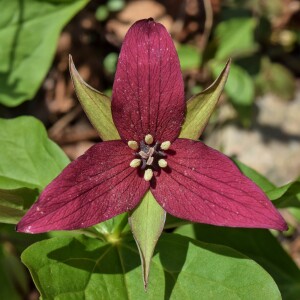
Thursday May 22, 2025
Episode 174: Native Landscape Design
Thursday May 22, 2025
Thursday May 22, 2025
In this episode, Kate Brittenham—an ecological landscape designer—chats with Tim and Jean about how native plant gardens can be both beautiful and practical. These kinds of landscapes do more than just look good—they support local biodiversity and give homeowners a sustainable alternative to the typical lawn. Kate grew up surrounded by native plants at Flying Trillium Gardens and Preserve, a special place in the southern Catskills created by her mother, Carolyn Summers. She shares how her design approach has shifted over time: from having to educate clients about the benefits of native plants to now working with folks who are already excited about creating ecological gardens. Kate also talks about how to strike the right balance between habitat and curb appeal, especially in suburban neighborhoods or places with HOA rules.
Kate also talks about how things have really changed in recent years—more people are paying attention to pollinators, invasive plants, along with an increasing awareness of the downsides of keeping a traditional lawn. Since the pandemic, she’s seen a real shift in what clients are asking for, and it’s changed how she approaches her work. She shares practical advice for anyone looking to make their yard more habitat-friendly, from choosing the right native plants to dealing with invasives and designing with the local environment in mind. The conversation also dives into the updated edition of Designing Gardens with Flora of the American East, the book she co-wrote with her mom, Carolyn Summers. Kate brings a great mix of honesty, plant knowledge, and optimism to the conversation—something gardeners of all experience levels will really enjoy.
So if you're thinking about ditching some of your lawn or just want to learn more about plants that support pollinators, listen in as Kate Brittenham shares smart, approachable advice to help you take that first step!
Hosts: Tim Kennelty and Jean Thomas
Guest: Kate Brittenham
Image: The Cosmonaut CC BY-SA 2.5 CA
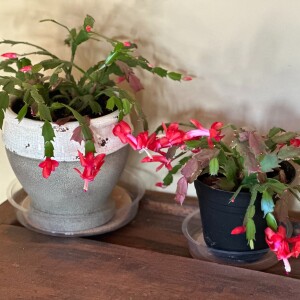
Thursday May 15, 2025
Episode 173: Flower Power Retrospective (Part 3)
Thursday May 15, 2025
Thursday May 15, 2025
Linda Levitt, Master Gardener Volunteer, rejoins Nature Calls: Conversations from the Hudson Valley with Flower Power Retrospective (Part 3) . In this episode you'll hear two previously aired short segments about flowers that have been compiled together for easier listening.
In the first segment, Linda discusses how to grow popular fall flowers that include Mums, Asters and Montauk Daisies. Including these beautiful plants in your flower gardens will bring lots of fall color to your landscape. Chrysanthemums are a large genus in the Asteraceae (daisy) family. The plants can grow 2-4 feet tall with blooms that are white, yellow, or pink in the wild species, but also come in multiple cultivars with many colors and shapes of flowers. Mums are divided into garden hardy and exhibition types. Garden hardy mums can be planted in gardens while exhibition mums are more florist types and need special growing care. Garden mums are often sold in the fall but can be planted in the garden for the following year. They need organic soils in full sun but can tolerate some shade in the south. Be sure to cut the plants back in summer to encourage bushiness and a later bloom time. Use in the border, in pots, or on the patio or porch for fall color. Asters are also members of the Asteraceae family. They have daisy-like flowers and come in a variety of colors. They are easy to grow and require minimal maintenance. They typically bloom in late summer and fall, adding color as the seasons change. They have mounding as well as erect varieties and may be propagated by seeds, division, root cuttings, or stem cuttings. Deer, rabbits, and other mammals may nibble at the flower buds but they don't tend to eat the entire plant because of its pungent smell, bitter taste. The plant tolerates the nibbling, which serves as beneficial pruning. Asters are an important food and nesting source for wildlife. The Montauk Daisy (also known as the Nippon daisy) is native to Japan but cultivated as an ornamental elsewhere. This perennial tolerates light shade in hot climates. New growth may be cut back slightly in spring to maintain plant compactness and encourage bushy form. Removing spent flower heads may promote additional blooms. Divide clumps every 2-3 years to maintain vigor. It produces wonderful, long-lasting fresh-cut flowers. They are also good for drought-tolerant gardens.
The second segment features Holiday plants including how to care for them. Amaryllis, Holiday Cactus and Poinsettias are all discussed. Amaryllis bulbs, native to Africa, come in various sizes. Amaryllis may be purchased as bare or planted bulbs, and are prized for their exotic trumpet-shaped flowers (typically red, white, pink, salmon, apricot, rose, or burgundy) on leafless stalks that can be 1-2 feet long. They add dramatic color to homes and gardens and make wonderful gifts to gardeners from beginners to experts. Amaryllis flowers, which can be single or double) range from 4 to 10 inches in size. The holiday cactus is a genus of succulent plants in the cactus family (Cactaceae) that are native to Southeast Brazil. This genus includes the Christmas and Thanksgiving cactus. It has fleshy stems, showy flowers and grows well as a houseplant, preferring moisture but adapting to a variety of home environments. It thrives in bright, indirect sunlight, but doesn't like direct sun. Periods of lower light in the fall will encourage winter blooms. They may be propagated by stem or root cuttings.The poinsettia is native to Mexico and Guatemala. In the United States, it is typically grown as a potted plant and is popular as a decorative flower (available in shades of red, pink, and white) during the holidays. The plant grows best in part shade at temperatures of 65 to 70 degrees Fahrenheit. Water the plant when the soil surface feels dry, but do not overwater. The cup-shaped yellow "flowers" bloom in the winter through the spring and cluster above showy red leafy bracts or modified leaves.
We hope you've enjoyed this retrospective series. As Linda Levitt reminds us "don't forget to stop and smell the flowers'".
Host: Jean Thomas
Guest: Linda Levitt
Photo by: Teresa Golden
Production Support: Linda Aydlett, Deven Connelly, Teresa Golden, Tim Kennelty, Amy Meadow, Xandra Powers, Annie Scibienski, Jean Thomas

